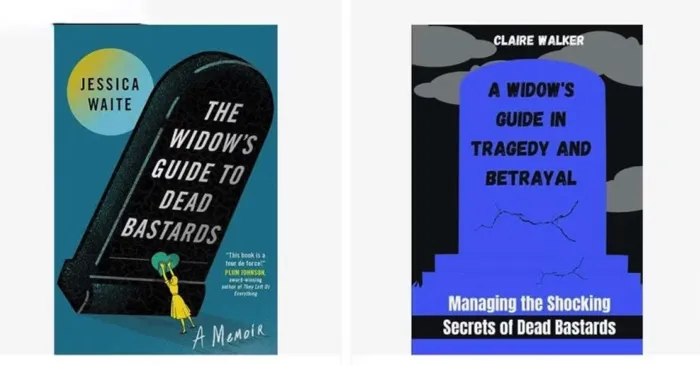Just before 8:00 AM on Sunday, October 20, 2024, parishioners were exiting the Catholic church in Cuxtitali, a neighborhood on the edge of the city of San Cristóbal de las Casas, in the highlands of Chiapas, Mexico’s southernmost—and poorest—state. Mass had just ended, and the churchgoers opened their umbrellas and clutched their shawls as they stepped into the chilly morning rain. Across the plaza the parish’s fifty-year-old Jesuit priest, Marcelo Pérez, was hurrying toward his white Ford, parked on an adjacent street.
Once in his car Padre Marcelo called a parish assistant who lived nearby with her family to say he was heading to another church and would pick her up on the way. While they were on the phone, she heard the pop of gunfire, a scream, and then a resigned cry of “Ay, ay.”
Surveillance footage shows the Ford drifting up the street before colliding gently with a parked car. The assistant, who asked me not to use her name, recalls grabbing her father and jumping in a cab. Within five minutes they reached Padre Marcelo’s car. It was surrounded by some twenty parishioners, but no police. They told her the shooter had been wearing a hoodie and a sports cap, but they could not make out his face. He had been on foot, with an accomplice on a motorcycle waiting to drive him away. There were bullet holes in the driver’s side window of the car, and inside, Padre Marcelo was dead.
For more than two decades Padre Marcelo had campaigned for the rights of Chiapas’s indigenous poor. As much as 40 percent of the state’s population is indigenous (predominantly Maya), and Padre Marcelo was a member of the Tsotsil, direct descendants of the Maya who inhabited the region before the Spanish conquest. Chiapas is starkly impoverished; a third of its population works on small corn and bean farms, a traditional form of agriculture that has spiritual significance for the Maya but has not provided a sufficient living for decades. For years indigenous farmers supplemented their income with seasonal migration to sugar plantations, coffee fincas, and cattle ranches, but many of those operations have closed down. Now two thirds of Chiapas’s residents live in poverty, almost half in extreme poverty. The average daily wage for an indigenous person in the state is the equivalent of less than five dollars.
Murder is widespread throughout Mexico, in great part owing to the drug cartels that have infiltrated all aspects of life. According to Amnesty International, more than 450,000 people have been murdered in the country since 2007, and over 100,000 have been disappeared. In Chiapas violence has risen precipitously since 2021, when gunmen from the Jalisco Nueva Generación cartel murdered El Junior, the son of the local leader of the Sinaloa cartel. In the ten months leading up to Padre Marcelo’s death, disappearances and displacements were up, and the rate of homicide had increased by more than 60 percent from the previous year. Considering these escalations, it’s no surprise that more than 500,000 residents of Chiapas—9 percent of the population—have migrated to the United States.
The Jalisco cartel has lately been attempting to take over Sinaloa’s lucrative rackets at the border between Chiapas and Guatemala, fighting with rocket-propelled grenades, drones, and heavily armored trucks known as narco-tanks. Entire towns have been abandoned for weeks at a time: last July nearly six hundred residents of Amatenango de la Frontera fled to Guatemala. And the cartels’ infiltrations have seemed to make the Mexican military increasingly skittish and violent. In October, after a smuggling truck refused an army squad’s orders to stop, soldiers opened fire, killing or maiming sixteen people. The majority were desperate migrants from Egypt, Nepal, Pakistan, and Cuba.
A special prosecutor in the attorney general’s office speculated that there isn’t a single municipality in Chiapas that the cartels don’t dominate; in fact their infiltration is so extensive that it has become impossible to measure. In Chiapas the two centers of resistance are the Zapatistas—the revolutionary insurgents who maintain their own health care and education systems and aspire to agricultural self-sufficiency—and the Maya known as the pueblo creyente, or “communities of believers.” Marcelo was a vocal leader in the community; his murder has dealt a severe blow to its ability to challenge the cartels.
The pueblo creyente are affiliated with the Roman Catholic Diocese of San Cristóbal de las Casas, which has a history of social activism dating to 1960, when Samuel Ruiz García became bishop. Ruiz began his tenure as a conservative, but as liberation theology swept through the Latin American Church in the 1960s, he adopted a “preferential option for the poor” and focused his ministry on the impoverished Maya in his diocese. Ruiz learned four Mayan languages. He crusaded against racist practices—like prohibiting indigenous people from walking on sidewalks during the day or anywhere at all in the city at night—and gradually incorporated into local Masses a set of indigenous practices that the Vatican finally approved in 2024.
Ruiz retired in 2000. No one in Chiapas took up his legacy more forcefully than Padre Marcelo. Like Ruiz, he was preternaturally gifted as a mediator. Over decades, he became the region’s most effective activist for the rights of indigenous people. Marcelo’s influence was all the more profound because he was the first native Tsotsil-speaking priest in a region that has been roiled by anti-indigenous racism.
Because of his courageous stances, Padre Marcelo was in constant conflict with the authorities. He was well known for his distrust of the police. He knew he was not safe from violence: he was beaten up on the street, the wheels on his car were loosened, and his ignition cable was once wired to his gas tank. At the time of his death there was a million-peso bounty on his head.
Despite all of this, for over a decade after his appointment in 2011 as parish priest of the Chiapas town of Simojovel, he led peace marches that seemed to constantly swell in size. In September 2024 he led 30,000 people on a march to Tuxtla Gutiérrez, the state capital, during which he urged Mexico’s newly elected president, Claudia Sheinbaum, and Chiapas’s incoming governor, Eduardo Ramírez Aguilar, to take the state’s problems seriously. Otherwise, he said, it “could explode.”
Eighty priests have been killed in Mexico over the past three decades, more than anywhere else in the world. Padre Marcelo was not the most famous priest in the country, but his reputation as a fearless opponent of Chiapas’s tide of lawlessness was unmatched. In the aftermath of his murder, attacks on both church personnel and human rights activists increased. There is widespread fear that, in Padre Marcelo’s absence, the cartels will be better positioned than ever to dominate local governments and inflict violence on the people of Chiapas.
North of San Cristóbal is the region of Los Altos, the highlands, with rolling, scalloped mountains covered in cornfields and small woodlots that descend north and east toward the rainforest, the coastal plain of Tabasco, and the Gulf. Padre Marcelo was born in Los Altos in 1974, in the small town of Chichelalhó. A shy boy with a pronounced stutter, he grew up working the land on his parents’ corn and bean farm.
“He knew what it was like to be looked down upon,” an anthropologist who knew him told me. Janet Schwartz, an American art historian who opened a clothing shop in San Cristóbal in the early 1980s, remembers the young Marcelo and his mother coming in with scraps of textiles to sell. “He’d be barefoot,” Schwartz remembers, “and cripplingly shy.” When she gave him hand-me-downs from her children, he would respond apologetically in Tsotsil, “Mu’yuk tak’in” (“There is no money”).
At fifteen he went away to seminary, where, a fellow priest said, he learned for the first time not just Spanish but “Western categories of thought.” In 2002, not long after he completed seminary, Padre Marcelo was appointed a parish priest in Chenalhó, a Tsotsil-speaking municipality near Chichelalhó. It was an important assignment because, among other reasons, Chenalhó had been the site of one of the defining events that followed the Zapatista uprising in January 1994.
This twelve-day uprising took Mexico by surprise. It began the day the North American Free Trade Agreement went into effect—an agreement the Zapatistas correctly predicted would cripple the local corn-based economy. Because the uprising was conducted largely by and for Chiapas’s indigenous population—the poorest of the poor—it was hugely popular with the Mexican public. But Mexico’s security forces were deeply hostile. Later the same year, even as the government and the Zapatistas were publicly negotiating a peace agreement, the military, with the government’s knowledge, instituted a secret program, Plan Chiapas, to train and equip paramilitary squads to unleash violence not just on the Zapatistas but on any pueblo creyente community that supported their progressive ideals.
On December 22, 1997, in the Chenalhó hamlet of Acteal, a group of pueblo creyente Catholics, part of a pacifist civil society organization known as Las Abejas (“The Bees”), was caught in the rampage of one of these secretly government-funded paramilitary groups. The Abejas had taken refuge in and around a tiny chapel, close enough to the violence that they could hear gunshots and see smoke rising from nearby villages. They imagined that because they were religious and had done nothing wrong, God would protect them. But when the paramilitaries, led by a group known as Máscara Roja (“Red Mask”), reached the chapel, they went into a murderous frenzy, executing forty-five Abejas, mostly women and children. (The number of victims is sometimes counted as forty-nine, to include four fetuses cut from their mothers’ wombs with machetes.)
The Mexican government initially tried to dismiss the massacre as “intercommunal violence,” but the horrific details—including the army’s attempt to destroy the evidence the morning after—provoked international outcry. Low-level Máscara Roja members were eventually sent to prison, but a number of them were released in 2009 after serving relatively short sentences. It took the government twenty-three years to admit to its own involvement. When it finally did, at a press conference given by the Secretariat of the Interior in 2020, the government offered the Abejas reparations, including new roads, scholarships, and improvements to electrical and water infrastructure. Some turned them down, arguing that the government had refused to indict the intellectual authors of the massacre. Former president Zedillo Ponce de León, alleged to have been one of the chief supporters of the clandestine counterinsurgency, was at the top of the list.
Regular attacks on indigenous communities nevertheless continued for so long that eventually children of members of Máscara Roja and other paramilitary squads became what are known as neo-paramilitaries. These gunmen work not for the government but for the cartels. In 2020 Simón Pedro Pérez López, a widely respected member of the board of Las Abejas, told a reporter, “We see with our own eyes that the sons of those who killed our families are now joining the ranks of new paramilitary groups, harassing indigenous communities.”
Padre Marcelo went to Seminario de Santa María de Guadalupe in Tuxtla Gutiérrez, which has a reputation as a theologically conservative institution. But when he arrived in Chenalhó, the history of violence in Acteal had an immediate effect on him. “Acteal gave me light,” he told a Uruguayan journalist in 2022. “I was afraid, but I could see that the people of Acteal were free.”
The indigenous activist Guadalupe Vázquez Luna noted how meaningful it was for locals to hear Mass led for the first time by a native Tsotsil speaker. “It’s not the same when people translate,” she told me. “It was beautiful; it was so important.” Vázquez Luna had survived the Acteal massacre. Her father, a catechist, was shot in the head. Her mother was also killed; as Vázquez Luna lay beside her outside the chapel, she felt the bullet enter her mother’s body.
For all the significance of his leadership in Chenalhó, however, Padre Marcelo faced a grave problem. Despite the notoriety of the Acteal massacre, the government continued its program of low-intensity warfare against both the Zapatistas and pueblo creyente communities. By 2002, thousands of locals had been driven off the land, many of them forced to flee into the mountains. Some resorted to using sheets of plastic as shelter. Many experienced malnutrition. As Padre Marcelo worked to arrange assistance for the displaced, he began to receive threats.
Padre Marcelo was initially reluctant to challenge authority, but as José Alfredo Jiménez Pérez, a Tsotsil member of Las Abejas, told me, the organization’s tradition of nonviolent activism transformed him. “He spoke out against alcohol and drug abuse,” a journalist who knew him well said. “He denounced the narcos regularly, more directly than the bishops.” In the words of Luz Rodríguez, a parish assistant in Chenalhó, he went from being a conejito (“rabbit”) to a león (“lion”). Retaliation was swift. After he campaigned against a government plan that would have forcibly resettled displaced indigenous people in a new model village, the parish house was set on fire. Later two men beat him up in the street.
In 2011, fearing for Padre Marcelo’s life, the San Cristóbal diocese transferred him thirty miles north to Simojovel, a center of amber mining run by the Gomez Dominguez family. Like many dominant families throughout Chiapas’s history, they are mestizo—nonindigenous, mixed-race. In Simojovel he quickly resumed his activism and helped form the environmental and human rights organization Movimiento en Defensa de la Vida y el Territorio. “The authorities have our demands in their hands,” the group told Ángeles Mariscal of the online outlet Chiapas Paralelo.
A stop to the murders, a stop to prostitution, a stop to drug trafficking, a stop to narco politicians, a stop to arms trafficking, a stop to human trafficking. We demand clean water, a decent hospital for our sick, and better road conditions.
He began leading protest marches. Two thousand people participated in the first, in March 2014, and four thousand in the second that June. By October the marchers’ ranks had swelled to 15,000 people.
According to press accounts, it was the Gomez Dominguez family who put the million-peso price on Padre Marcelo’s head. They also threatened to “do like Acteal”—to burn down Padre Marcelo’s Simojovel church and everyone in it. Meanwhile Marcelo kept the state government apprised of his activities. At one point they offered him an armored car.
And then there was the situation in Pantelhó, a prime example of the cartels’ municipality-by-municipality domination of the region. Pantelhó had long been controlled by another mestizo family, known as Los Herrera. According to Luis Hernández Navarro, the opinion editor of the Mexico City daily La Jornada, Los Herrera’s businesses include “trafficking drugs, migrants, and weapons as well as stealing cars.” A person connected to Chiapas law enforcement told me that Los Herrera were allied with the Jalisco cartel, although it’s difficult to confirm such links.
What is clear about Los Herrera is that they are extraordinarily violent. They reputedly recruited professional gunmen from Campeche, Veracruz, and Sinaloa. The Mexican magazine Proceso characterized the family’s longtime patriarch, Austreberto Herrera, as a man who “solved everything with gunfire.” He is currently in jail for murdering two relatives who made fun of his son, Daylí Herrera de los Santos, for his cleft lip. Daylí himself is in jail under suspicion of ordering a hit on the Chiapas prosecutor Gregorio Pérez Gómez, who had been appointed to investigate violence in Pantelhó; Pérez Gómez was gunned down by motorcycle-riding sicarios (“hit men”) on the streets of San Cristóbal in August 2021. According to the diocese of San Cristóbal, some two hundred residents of the town have been assassinated during the Herreras’ twenty-year reign of terror.
Most residents of Pantelhó are indigenous poor, many of them affiliated with Las Abejas or the Zapatistas. The entire population of the town lives below the poverty line, and more than half live in extreme poverty. It is largely the indigenous poor who have been the victims of Herrera violence.
In June 2021 a group of Pantelhó residents petitioned state authorities to do something about the Herreras’ choke hold and enlisted Simón Pedro Pérez López, the Las Abejas board member, to help. Pérez López drafted a letter documenting a recent series of Pantelhó murders and delivered it discreetly to Chiapas state authorities. Nonetheless, word got out, and sicarios found Pérez López in the Simojovel market with his young son. They executed Pérez López with a shot to the head.
That murder may have been a step too far for Los Herrera. For the region’s indigenous poor, and for the pueblo creyente in particular, Pérez López was an important moral leader. In early July, two days after Pérez López was killed, dozens of heavily armed, balaclava-clad men occupied the Pantelhó town center. They announced themselves as El Machete, an autodefensa (“self-defense”) organization representing the villages of Pantelhó. In a statement to the press, they said they would no longer tolerate drug traffickers, sicarios, or narco-politicians. They wanted an end to land invasions, seizures of communal property, criminal impunity, and the repression of indigenous people.
Three weeks later El Machete returned to Pantelhó to round up twenty-one people whom they accused of being Herrera assassins, including five members of the Herrera family. They burned down their houses, handcuffed the accused to a kiosk in the middle of the town square, and explained that because Chiapas authorities had refused to protect Pantelhó’s residents, they would do it themselves. El Machete then loaded their captives into pickup trucks and hauled them to the nearby hamlet of San José Buenavista Tercero, where they were subjected to a public inquisition. Three people in the group were found innocent or were otherwise released. The other eighteen—including the five Herreras—were disappeared.
When, after the disappearances, El Machete appeared before the press, Padre Marcelo appeared with them. He had always counseled nonviolent resolutions, and to many viewers his presence signified his desire to mediate differences in the region. At one point a journalist asked a Machete spokesperson about the missing people, and Padre Marcelo looked visibly distressed. That footage was enough for Los Herrera to persuade the Chiapas attorney general’s office to issue an arrest warrant for Padre Marcelo. But the attorney general’s office never executed the warrant, possibly because they knew of Padre Marcelo’s advocacy of nonviolence, possibly because he had not been at the inquisition.
Immediately after the disappearances, the Herreras formed their own autodefensa unit, called the Indigenous Civil Army, and struck back, leaving central Pantelhó a ghost town, with municipal buildings pockmarked by bullet holes. Since then violence has spread into adjacent Chenalhó. Dozens have been killed, and 3,400 additional people have been displaced.
In June 2024, owing to this surge in violence, the Mexican government postponed Pantelhó’s municipal elections. They did so again in August. But on September 30, in the final hours before the terms of all Chiapas legislators ended, a small group of representatives unilaterally appointed a Los Herrera slate to head an interim Pantelhó government. That decision has been challenged in federal court, and a new election has once again been scheduled. But the interim government arrived in office just in time to take control of the 18-million-peso budget at the beginning of October.
Three years earlier, out of concern for Marcelo’s safety, the diocese had transferred him back to San Cristóbal. He was made priest of the parish of Guadalupe, which includes the church in Cuxtitali, and became the head of San Cristóbal’s diocesan social ministry. The size of his demonstrations continued to grow, culminating in the 30,000-person peace march in September, which for the first time included Chiapas’s two other dioceses.
Still, despite his successes in San Cristóbal and the rapid growth of his movement, by all accounts Padre Marcelo remained haunted by his failure to stop the escalating violence in and around Pantelhó. After the elections at the end of September, the incoming governor briefly used Padre Marcelo as a mediator—and then, according to security sources, abruptly cut him off. After years of threats to his life, in 2016 the Inter-American Commission on Human Rights (a branch of the Organization of American States) had ordered Mexico, a member state, to provide him with security, but he put his principles ahead of his life and refused bodyguards. “It’s against the Gospel for someone to die in order for me to live,” he told a journalist. He was murdered not long after.
Within days Chiapas authorities had arrested the suspected hit man, a small-time narcotics dealer known as El Kalimba or El Rey de Cristal. He was confined to El Amate, a maximum-security prison in Chiapas. But in late November a Chiapas radio reporter noted that El Kalimba and a carload of his relatives had been kidnapped by unknown parties while driving outside the prison. No explanation was offered by the authorities.
El Kalimba was rearrested by municipal police in San Cristóbal in March. After Padre Marcelo’s assassination, President Sheinbaum had promised a federal investigation without impunity. (According to the think tank México Evalúa, more than 93 percent of investigated crimes in Mexico go unpunished.) However, after nine months, the case appears stalled, and impunity’s reign seems likely to continue.
Padre Marcelo’s death shows the residents of Chiapas just how close they are to the political edge. Before Donald Trump’s reelection, the going rate to be smuggled to the United States, an immigration expert at a Mexican university told me, was $15,000. For an indigenous man, coming up with that kind of money typically involves not just borrowing from relatives but taking out loans at usurious interest rates and putting up land, a house, cars, and anything else as collateral. Those who successfully reach the US are able to send home otherwise unimaginable sums of money. Last year close to $1 billion flowed from the US to San Cristóbal, making it the leading Mexican city for remittances.
Trump’s promise to deport millions of undocumented migrants to Mexico is profoundly destabilizing. As of late April more than 3,500 had already been dumped at an airport in Tapachula by planes operated by GlobalX Airlines, the same mysterious charter service that flew Venezuelan immigrants to El Salvador in March even after a judge ordered an injunction against the deportations. If thousands of additional migrants are forced to return to Chiapas, Gabriela Coutiño, the Chiapas correspondent for Proceso, told me, it would be catastrophic. “Most communities in Chiapas barely have basic services for the existing population, let alone jobs or work guarantees,” she said.
If, in addition, the migrants entering Mexico from the south—over the Guatemala border—were no longer just passing through, but rather were also forced to stay, it would be a perfect storm…. They would have to join the cartels to survive.
For decades Padre Marcelo was perhaps the most outspoken political dissident in one of Mexico’s most vexed regions. When pushing for solutions, he could even be defiant. Privately, however, he was fearful. In the weeks before his assassination, according to the reporter Pablo Ferri, he called close friends and wept. His assistant at Iglesia de Guadalupe told me that he listened obsessively to a ballad called “El martes me fusilan” (“On Tuesday They’ll Shoot Me”), about a Catholic killed for his faith. “They will kill my useless body,” goes the song, “but never, never, my soul.”



















 English (US) ·
English (US) ·